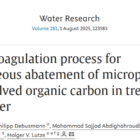Phosphate elimination is a key process in industrial water treatment and wastewater treatment that aims to remove phosphorus compounds from water or wastewater. Phosphates are essential nutrients for the growth of organisms, but an excess of phosphates in natural waters leads to eutrophication, which disturbs the ecological balance. Phosphate elimination is therefore crucial for minimizing environmental pollution and complying with legal limits.
Table of contents
Importance of phosphate elimination
Avoidance of eutrophication:
- Phosphates promote the growth of algae and aquatic plants, which in excess leads to oxygen deficiency and fish mortality in bodies of water.
- Particularly critical in rivers, lakes and coastal waters.
Compliance with legal regulations:
- Many countries have strict limits for the phosphorus content in wastewater. For example, the permissible limit value for total phosphorus in Germany is usually 1-2 mg/L.
Reuse of water:
- For the industrial use or recycling of water, phosphate concentrations must be reduced in order to avoid corrosion, fouling or biological contamination.
Phosphorus recycling:
- Phosphates are a limited raw material that is used as a fertilizer, particularly in agriculture. Recovering it from wastewater is an important step towards conserving resources.
Chemical and biological principles of phosphate elimination
Phosphorus forms in water:
- Orthophosphates (PO₄³-): Directly biologically available and water-soluble.
- Polyphosphates: Condensates of orthophosphates used in industrial processes, which are converted into orthophosphates by hydrolysis.
- Organically bound phosphorus: Component of organic substances such as biomass or cleaning agents.
Relevant chemical reactions:
- Phosphate precipitation: Formation of poorly soluble compounds such as iron phosphate or calcium phosphate.
- Biological uptake: Uptake of phosphate by microorganisms in the form of polyphosphates.
Phosphate elimination process
Phosphate elimination can be carried out using physical, chemical or biological processes. In practice, a combination of these approaches is often used.
1. chemical phosphate elimination
- Principle: Addition of precipitants that form poorly soluble compounds with phosphates.
- Typical precipitants:
- Iron salts (e.g. FeCl₃, FeSO₄): Formation of iron(III) phosphate.
- Aluminum salts (e.g. Al₂(SO₄)₃): Formation of aluminum phosphate.
- Calcium salts (e.g. milk of lime, Ca(OH)₂): Formation of hydroxyapatite.
- Applications:
- Directly in the wastewater treatment (simultaneous precipitation in the aeration tank).
- Post-precipitation in the secondary clarifier.
- Advantages:
- High efficiency in the removal of orthophosphates.
- Disadvantages:
- Increased sludge production, which must be disposed of.
- Costs for precipitants.
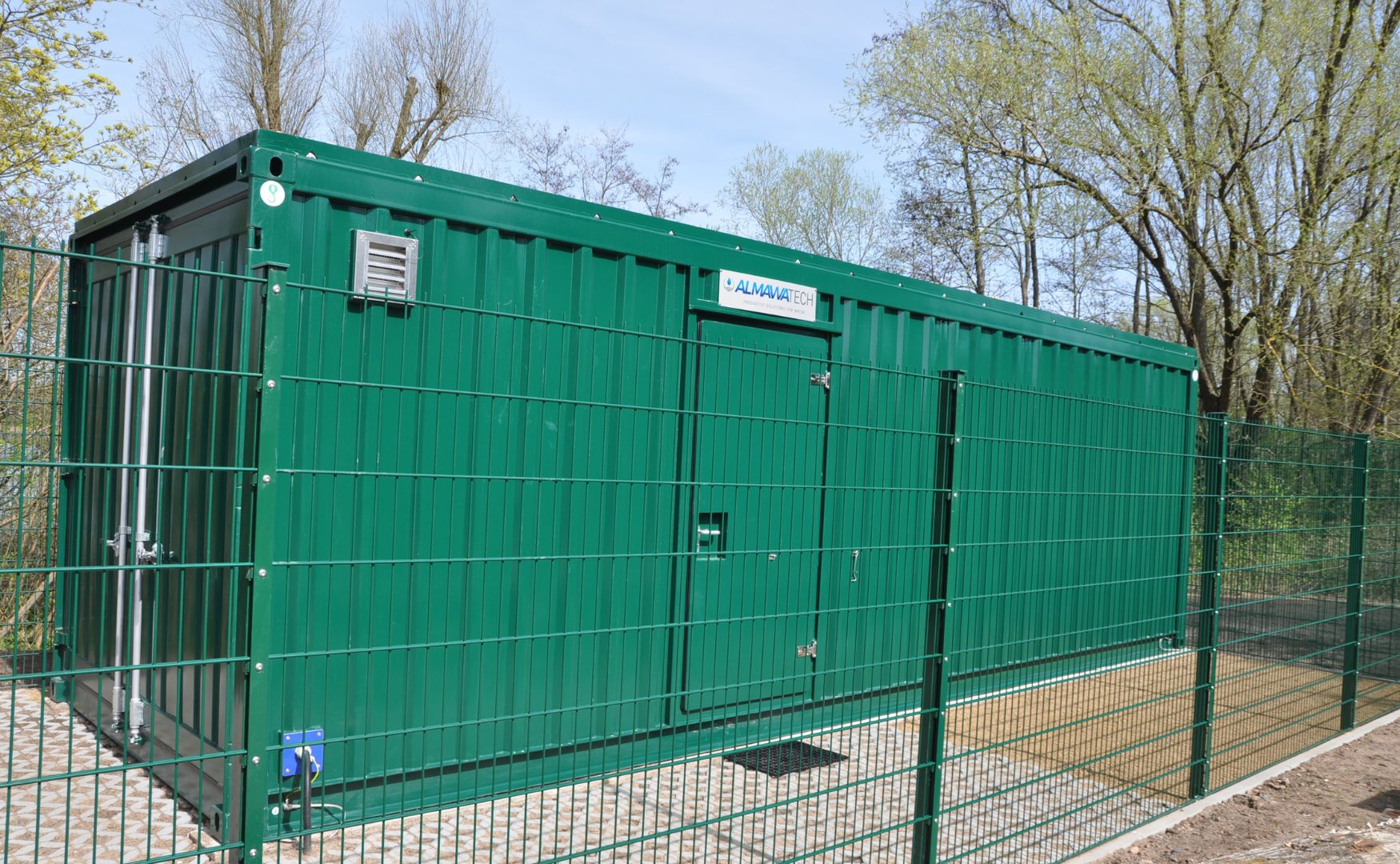
Photo: Our ALMA NeoDAF flotation plant for removing phosphates from the Schultheis pond in Offenbach, installed in the ALMA MODUL technical room container
2. biological phosphate elimination (Bio-P process)
- Principle: Use of polyphosphate-accumulating organisms (PAOs) that store phosphate in their cells.
- Process:
- In the anaerobic range, PAOs release phosphate to obtain energy from stored polyphosphates.
- In the aerobic zone, they absorb more phosphate than they have previously released.
- Advantages:
- Lower operating costs than chemical processes.
- Reduction of chemical consumption.
- Disadvantages:
- Dependence on stable operating conditions (temperature, pH value, nutrient ratios).
- Not effective with high phosphorus concentrations.
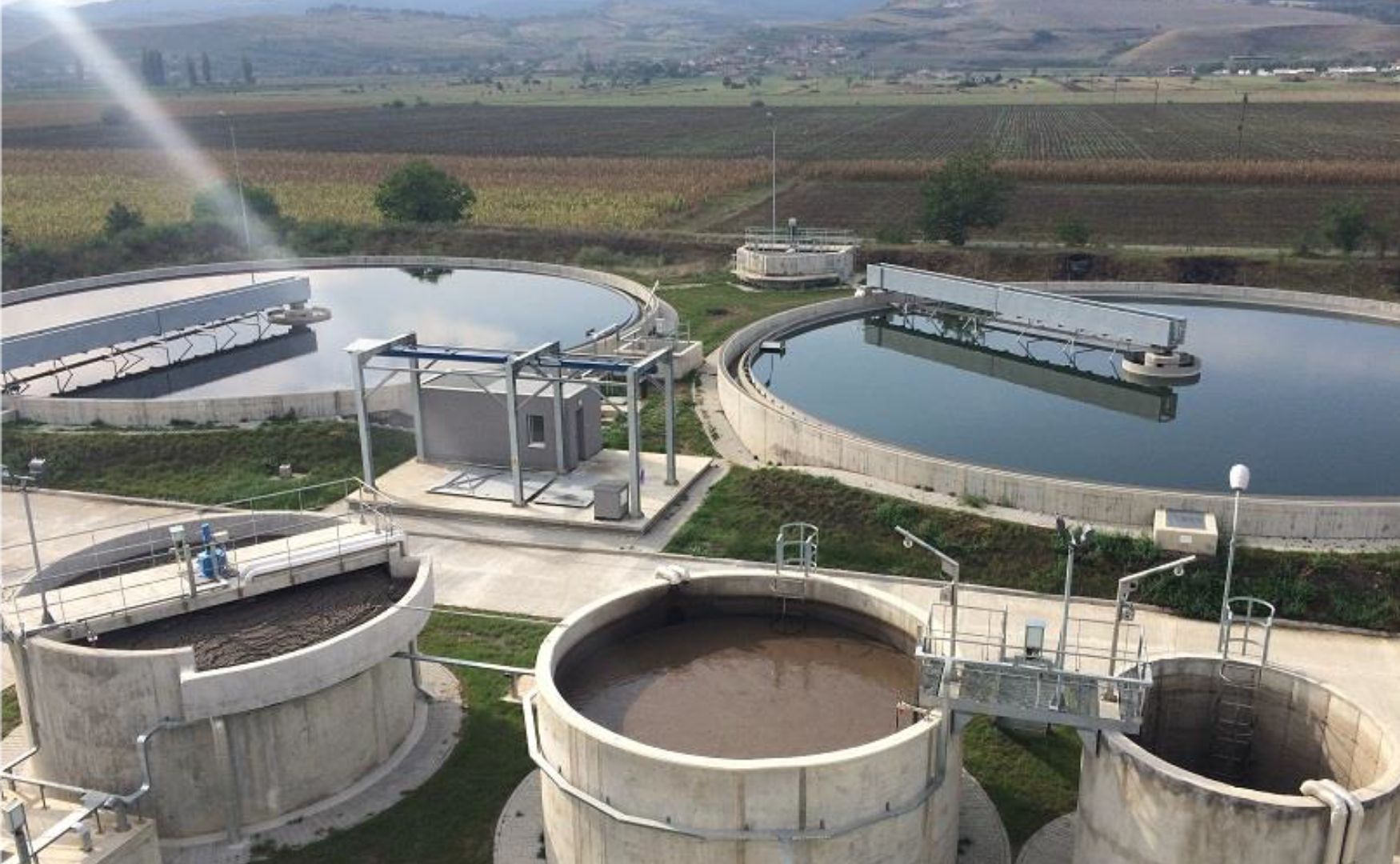
Photo: Biological phosphorus elimination of wastewater from our ALMA BHU GMR biogas plant
3. membrane process
- Mechanism: Use of reverse osmosis (RO) or nanofiltration (NF) to retain dissolved phosphates.
- Application: Treatment of industrial wastewater with high phosphate concentrations.
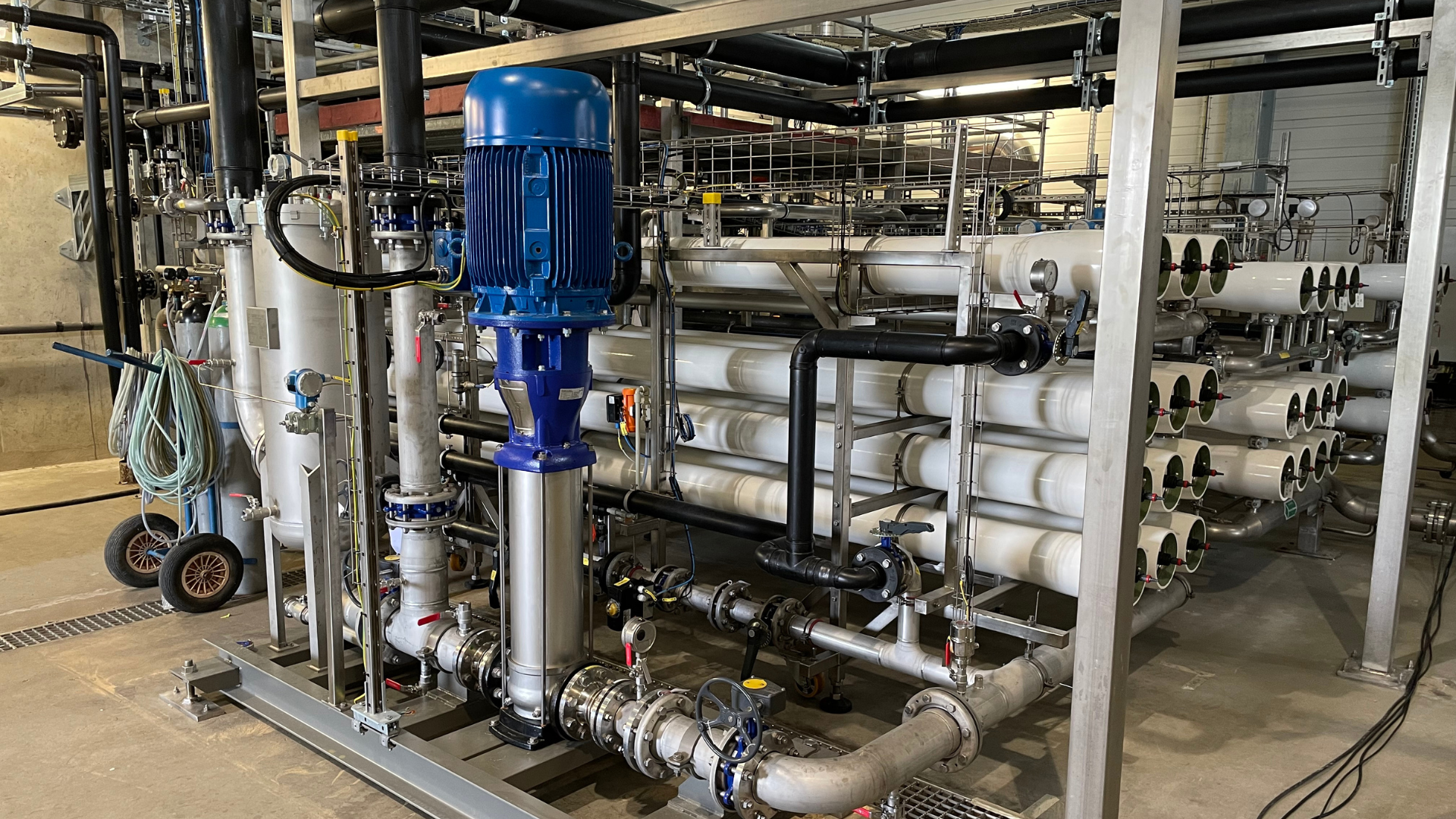
Photo: Our ALMA OSMO Process reverse osmosis system for producing demineralized water
4. adsorption
- Mechanism: Use of adsorbents such as activated carbon, iron hydroxide or zeolites to bind phosphates.
- Application: Suitable for low phosphate concentrations in drinking water treatment plants.
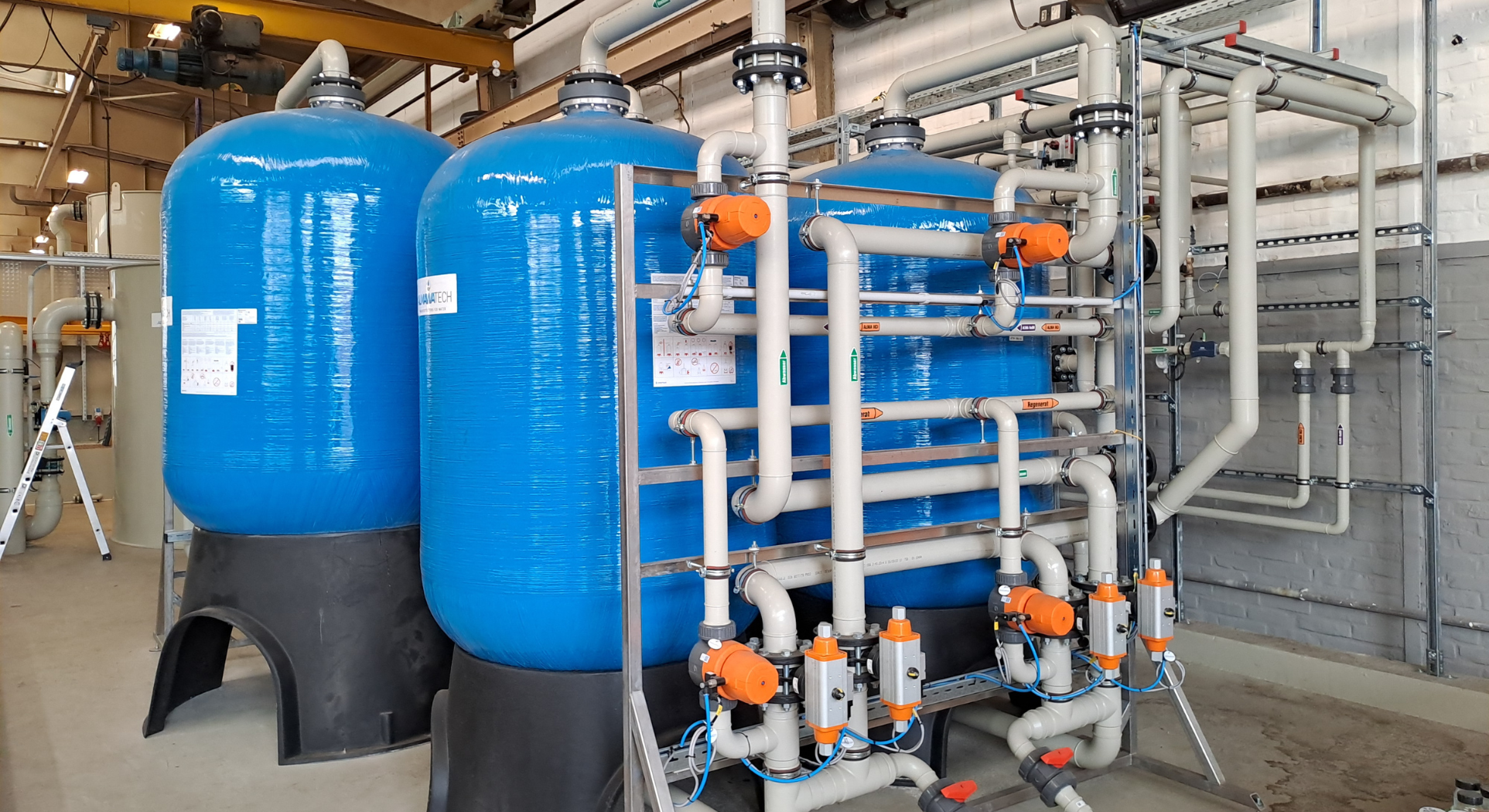
Photo: Our ALMA FIL AK activated carbon filtration system with upstream multi-layer filtration
Combined procedures
In practice, a combination of biological and chemical phosphate elimination is often used to achieve maximum efficiency:
- Simultaneous precipitation: Addition of precipitants directly into the aeration tank.
- Post-precipitation: Chemical precipitation after biological treatment to remove residual phosphorus.
- Struvite precipitation: Recovery of phosphate in the form of magnesium ammonium phosphate (struvite), which can be used as a fertilizer.
Challenges and solutions
High operating costs for chemical processes:
- Solution: Optimization of dosing and integration of biological processes.
Increased sludge production:
- Solution: Improved dewatering and thermal utilization of the sludge.
Fluctuating phosphorus concentrations:
- Solution: Buffering through mixing tanks and continuous process monitoring.
Limited biological efficiency:
- Solution: Combination with chemical precipitation to ensure compliance with legal limits.
Conclusion
Phosphate elimination is a complex but indispensable process in water and wastewater treatment. The choice of the right process depends on the phosphorus elimination requirements, the operating conditions and the available resources. A combination of biological and chemical processes often offers the best solution to ensure both environmental objectives and economic efficiency. Modern approaches such as phosphate recycling also contribute to the sustainable use of this valuable raw material.
For further information on our products, please feel free to contact us at any time!








